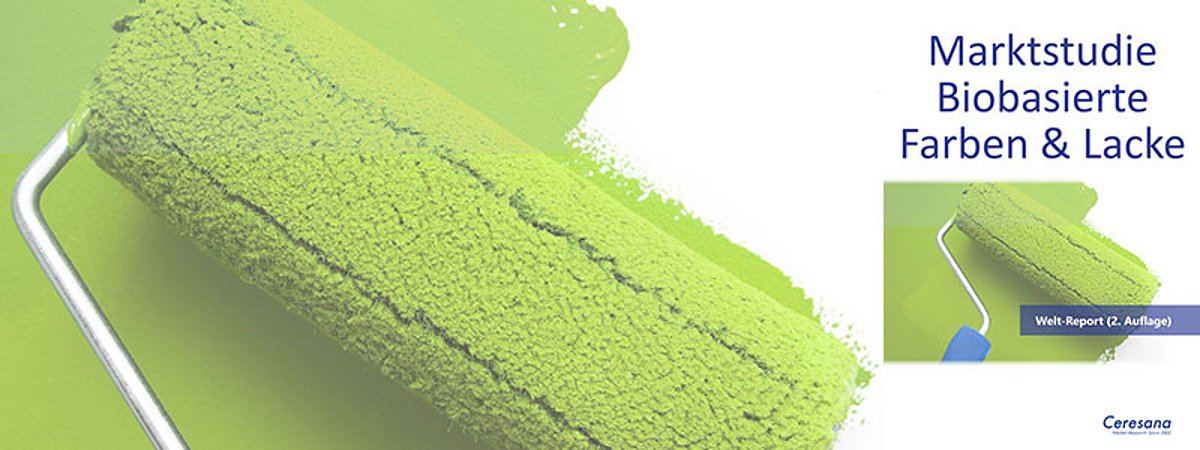Ceresana examines the global market for bio-based paints and coatings

The latest market study by Ceresana on the global market for bio-based paints and coatings forecasts that global demand for bio-based paints and coatings will increase to around 25 billion US dollars over the next ten years. In addition to market data and forecasts, the study also contains background information.
Natural paints, organic paints, eco-paints or even vegan paints: bio-based paints and varnishes are offered under various names. The "green" coatings not only promise to be healthier and more environmentally friendly than petrochemical products - they are also increasingly developing into an interesting business segment. This is the second time that Ceresana has analyzed the global market for organic paints and organic coatings, which are used for the interior and exterior of buildings or as wood and industrial coatings. To date, these organic coatings have only made up a small part of the overall paint and varnish market. However, their sales are increasing significantly: The latest market study by Ceresana forecasts that global demand for organic coatings will rise to around 25 billion US dollars over the next ten years. In addition to market data and forecasts, the study also contains background information on the regulatory framework of the paint and coatings industry as well as the general economic situation and the situation in the construction industry (e.g. important companies, construction activities, investments) in the individual countries.
Study on coatings made from renewable raw materials
Bio-based paints and coatings are made entirely or at least partially from renewable raw materials or minerals. What exactly "organic" means in this context is defined differently by various eco-labels and certification bodies. Ideally, the ingredients should come from sustainable agriculture, forestry or fisheries and remain as unaltered as possible. For example, natural binders, pigments and fillers made from plant starch, tree resins, mussel shells or chicken feathers are developed in the spirit of the bio-economy and circular economy. This reduces dependence on crude oil and natural gas, and previously unused waste from the food industry can be recycled. However, bio-based products cannot yet compete with paints based on acrylic, vinyl or other conventional plastics in all applications, for example in the case of sophisticated paints for cars or other industrial products. Bio-based paints and coatings are also often more expensive.
Advantages of bio-based paints and varnishes for health and the environment
Bio-based paints and varnishes can be combined well with other sustainable building materials, for example with bio-insulating materials, bio-adhesives and bio-plastics. Some bio-based paints and varnishes offer better quality and economy than their fossil-based competitors, for example advantages such as higher color stability, abrasion resistance, viscosity or color coverage. Natural pigments offer a very broad color spectrum. Diffusion-open natural paints prevent condensation and mold: they allow air humidity to pass through, can store it and release it again. Above all, however, organic coatings are largely free of toxic additives - and are therefore also suitable for sensitive areas such as children's rooms. The "full declaration" of all ingredients not only helps allergy sufferers and people with chemical intolerances. The long-term effects of solvents, plasticizers, nanoparticles and other potentially toxic paint substances often still need to be researched. In contrast, many natural materials have been known and tested for centuries, such as lime paints. Biodegradable paint residues do not have to be expensively disposed of as hazardous waste. The new study offers a comprehensive presentation and analysis of the global market for bio-based paints and varnishes, deals with the national markets with the largest paint sales individually and offers useful company profiles.
